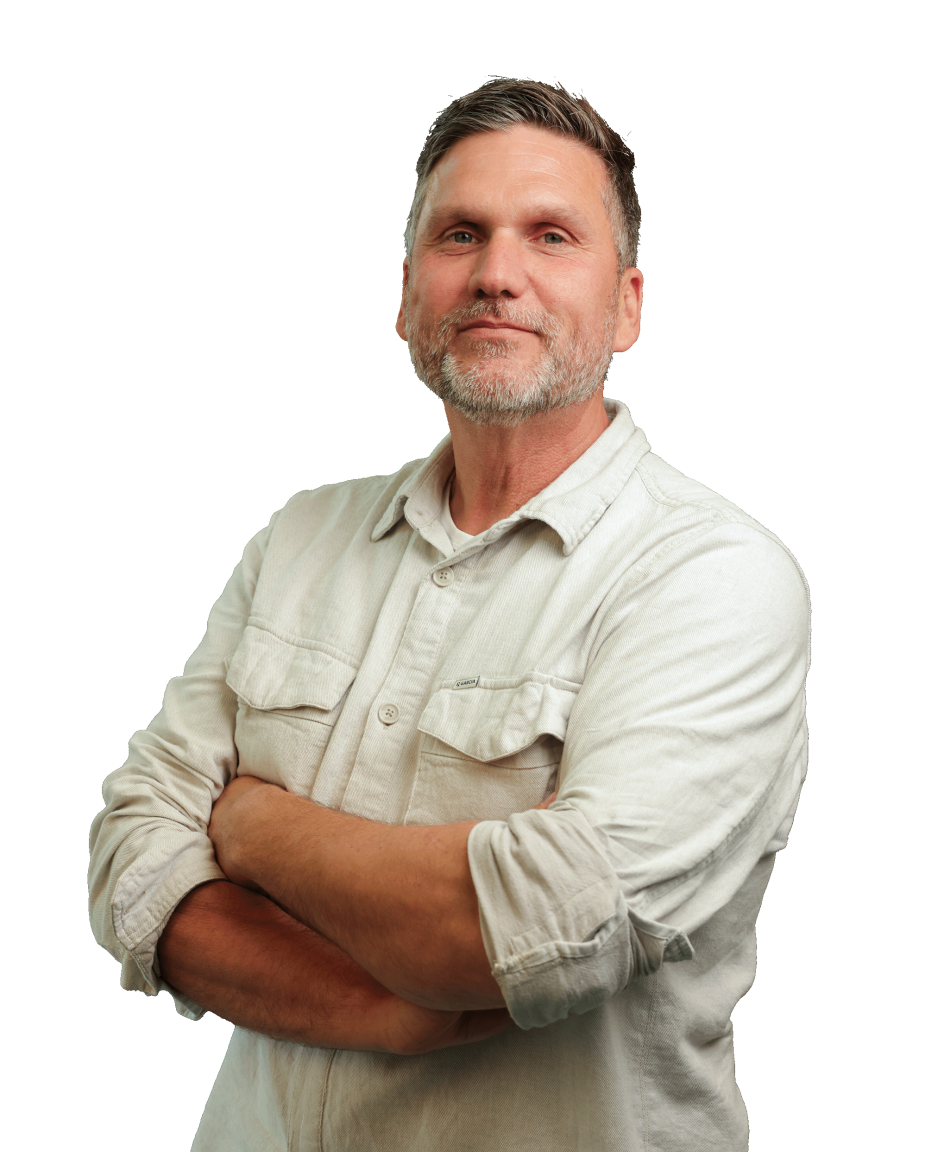
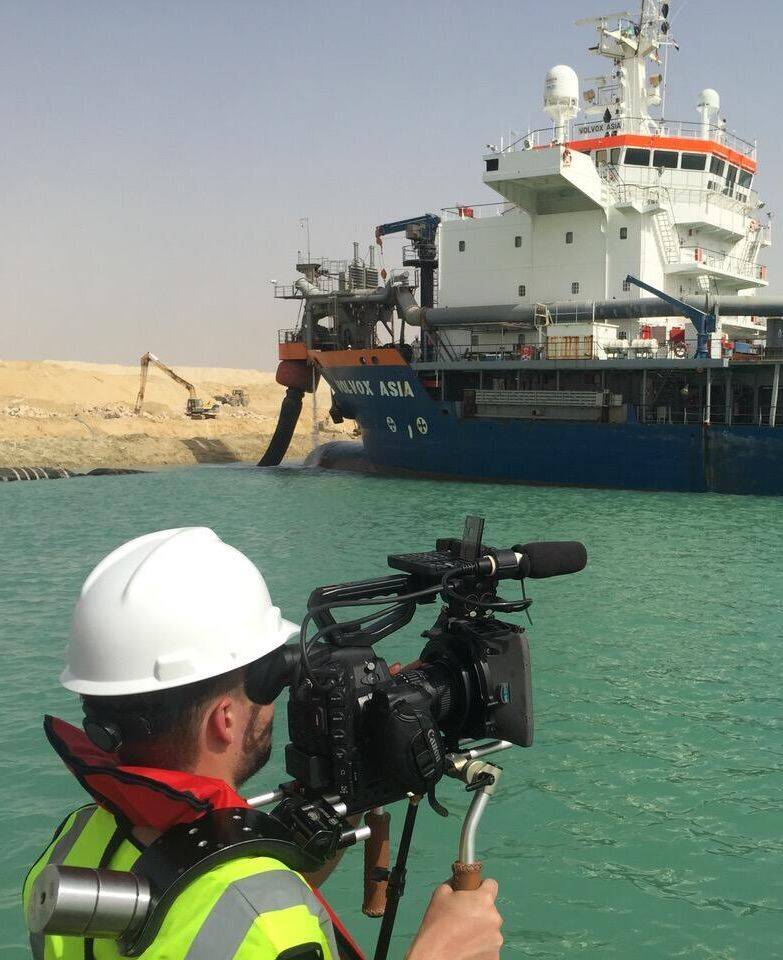
“Once, while changing lenses, a battery fell out of someone's hands from two decks up. Since then, we only change them in safe places”
What have you learned from working with HSE professionals?
'A lot. I once went out with someone from QHSE at Van Oord. That's when I learned what induction really means: safety has to “sink in”. HSE isn't the police, it's a partner. Thanks to all the safety campaigns we've done, we as a film crew now look at risks differently. We have protocols for our PPE, but also for emergencies. Who do we call? What if someone drops out? We didn't have that kind of thing in place before, but now we do.'
As a director, you are also responsible for your crew. How do you deal with that?
‘As a cameraman, you want the best shot. But as a director, you sometimes have to say: don't do that, it's not safe. Especially on long shooting days, you have to stay sharp. That's why we take turns, take breaks and divide our energy. And you also discuss that with the crew on board: how is the operation going, when can we film? That way, it remains workable and safe.’
You get to work on many different ships. How do you prepare for that?
‘I've been on all kinds of ships, from a small shrimp boat in the North Sea to the largest crane ships in the world. Every situation is different. So communication is key. We're not on a ship every day like the crew is. That's why we start every day of filming with a check-in: what's going to happen, what do we want to do and how do we coordinate that? That way, you avoid surprises.’
And during filming?
‘We keep each other well informed. The crew always knows where we are and what we're doing. We also check all our equipment beforehand. Is everything safe? Are there any loose parts on the tripods? A lot of the gear hangs from special shoulder straps so that we have our hands free on a swaying ship.’
Does everything always go smoothly?
‘Of course not. Once, during a lens change, a battery fell out of someone's hands from two decks up. That's a typical example of a “dropped object”. Imagine if someone had been walking there without a helmet... Since then, we only change batteries and lenses in safe places. Indoors or on a quiet part of the deck.’
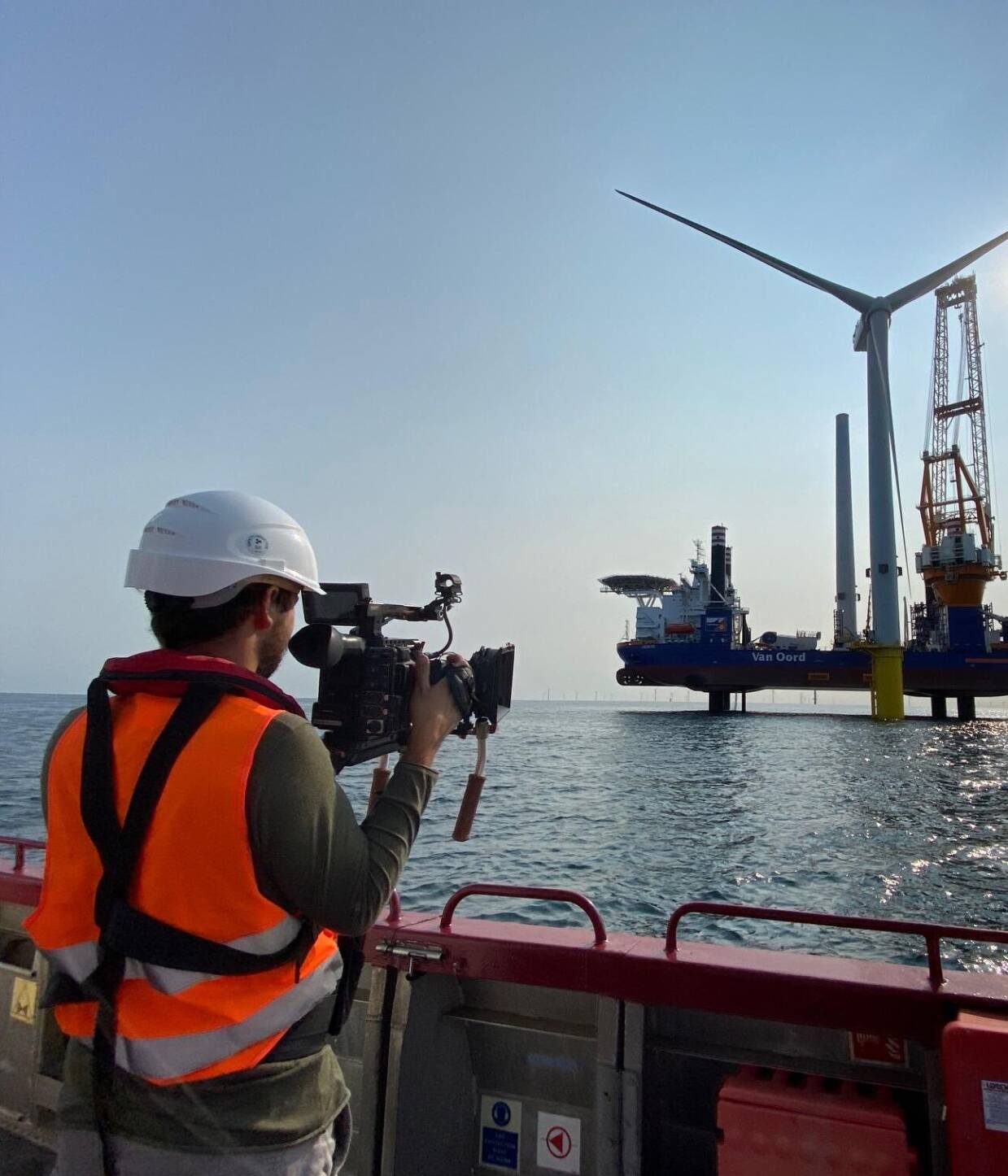
“I've been on all kinds of vessels: from a small shrimp boat in the North Sea to the largest crane ships in the world. Every situation is different. So communication is key”
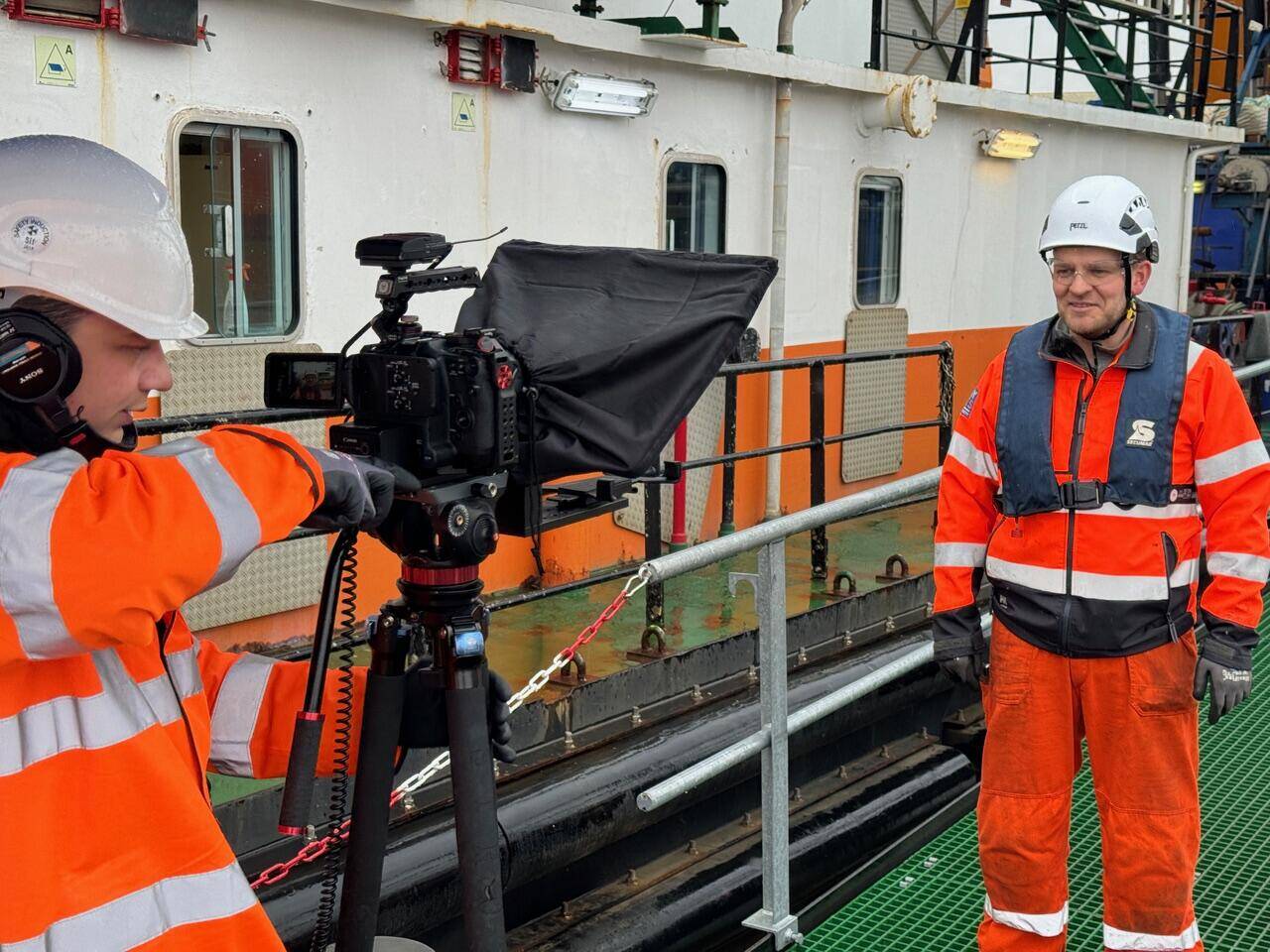
From the Sand Motor to the largest crane ships in the world, director and filmmaker Tijmen van Vlier has been making impressive productions on and around the sea for more than 15 years. But one thing always comes first: safety.
When did your adventure as a maritime filmmaker begin?
'In 2010. My first big job was a film about the construction of the Sand Motor, an innovative piece of coastal defence realised by Boskalis and Van Oord. Since then, I've been filming more and more on and around the water. First about projects and information, later more about safety at sea. Nowadays, we also regularly shoot videos about offshore wind farms. This requires all kinds of training, because every organisation has its own safety protocols.‘
What has struck you over the years?
’The focus on safety has increased enormously since I started. In the past, it was more like, “Just act normal, and everything will be fine.” Now it's standard practice to double-check all work and equipment. But also: are you fit enough to work safely? That's just as important."
Foto: KVNR
We are always looking for personal stories from the maritime sector. Stories of (near) accidents, where a situation only just ended well, are incredibly valuable. By sharing your experiences, you help others become more aware of dangers and how to prevent them. Sharing these stories can save lives and contribute to a culture of safety at sea. Want to share your story? Sign up using the form on our website. Together, we will make the sea a safer place to work for everyone.
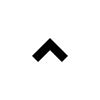
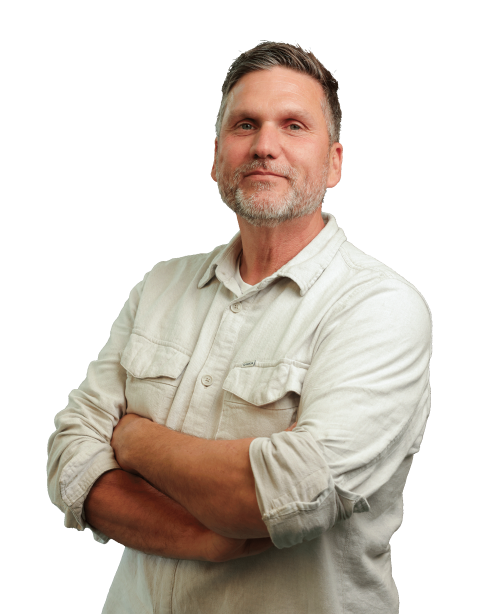
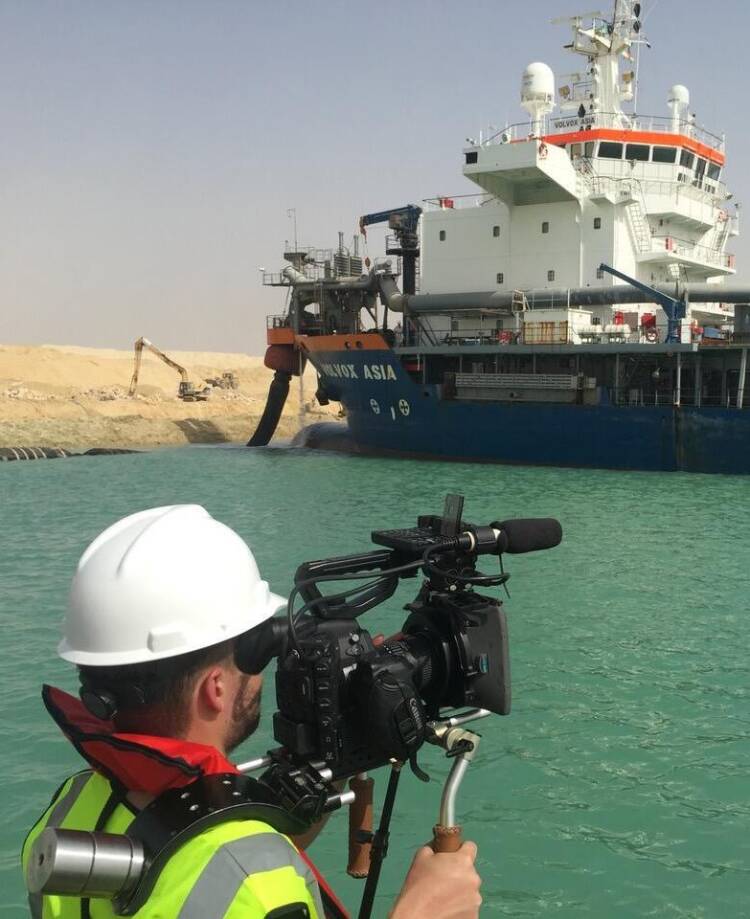
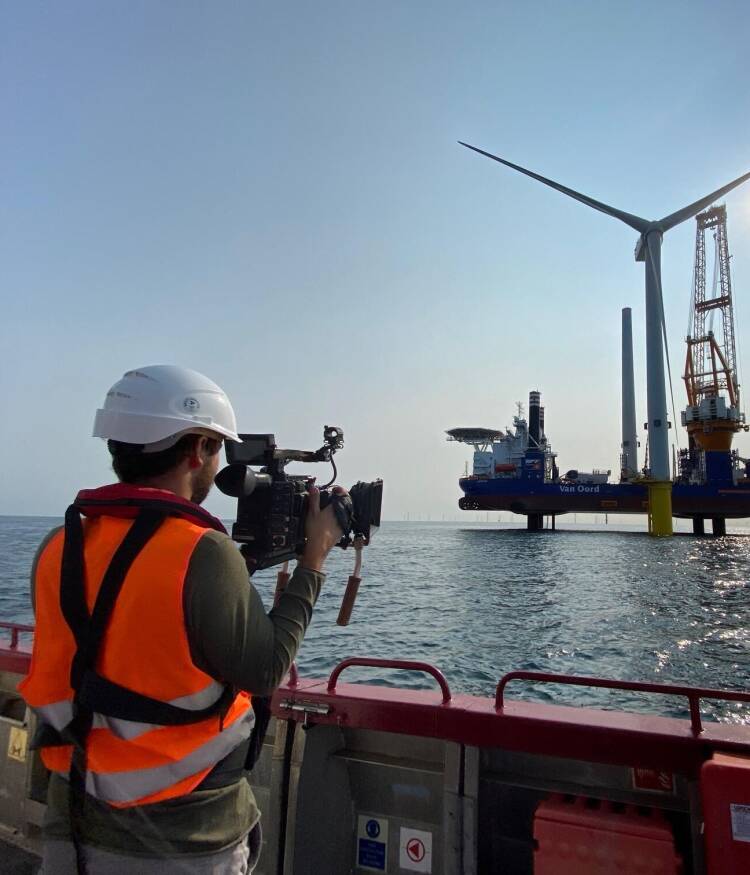
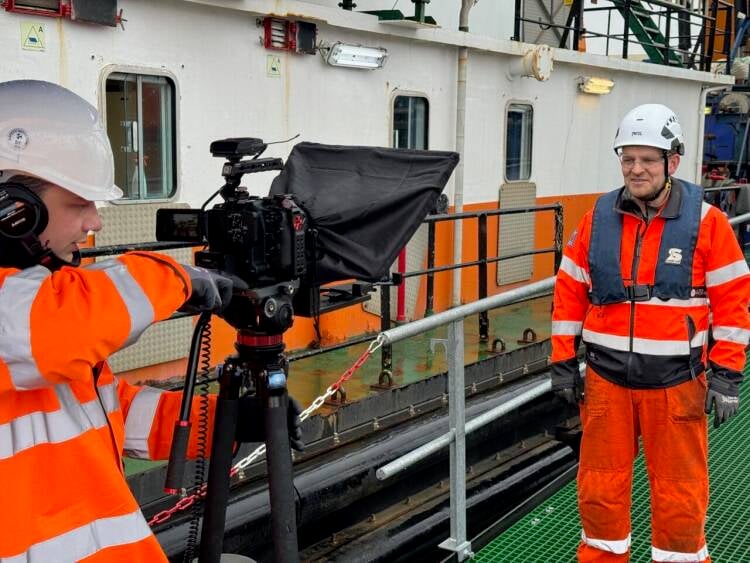
What have you learned from working with HSE professionals?
'A lot. I once went out with someone from QHSE at Van Oord. That's when I learned what induction really means: safety has to “sink in”. HSE isn't the police, it's a partner. Thanks to all the safety campaigns we've done, we as a film crew now look at risks differently. We have protocols for our PPE, but also for emergencies. Who do we call? What if someone drops out? We didn't have that kind of thing in place before, but now we do.'
“Once, while changing lenses, a battery fell out of someone's hands from two decks up. Since then, we only change them in safe places”
As a director, you are also responsible for your crew. How do you deal with that?
‘As a cameraman, you want the best shot. But as a director, you sometimes have to say: don't do that, it's not safe. Especially on long shooting days, you have to stay sharp. That's why we take turns, take breaks and divide our energy. And you also discuss that with the crew on board: how is the operation going, when can we film? That way, it remains workable and safe.’
“I've been on all kinds of vessels: from a small shrimp boat in the North Sea to the largest crane ships in the world. Every situation is different. So communication is key”
You get to work on many different ships. How do you prepare for that?
‘I've been on all kinds of ships, from a small shrimp boat in the North Sea to the largest crane ships in the world. Every situation is different. So communication is key. We're not on a ship every day like the crew is. That's why we start every day of filming with a check-in: what's going to happen, what do we want to do and how do we coordinate that? That way, you avoid surprises.’
And during filming?
‘We keep each other well informed. The crew always knows where we are and what we're doing. We also check all our equipment beforehand. Is everything safe? Are there any loose parts on the tripods? A lot of the gear hangs from special shoulder straps so that we have our hands free on a swaying ship.’
Does everything always go smoothly?
‘Of course not. Once, during a lens change, a battery fell out of someone's hands from two decks up. That's a typical example of a “dropped object”. Imagine if someone had been walking there without a helmet... Since then, we only change batteries and lenses in safe places. Indoors or on a quiet part of the deck.’
From the Sand Motor to the largest crane ships in the world, director and filmmaker Tijmen van Vlier has been making impressive productions on and around the sea for more than 15 years. But one thing always comes first: safety.
When did your adventure as a maritime filmmaker begin?
'In 2010. My first big job was a film about the construction of the Sand Motor, an innovative piece of coastal defence realised by Boskalis and Van Oord. Since then, I've been filming more and more on and around the water. First about projects and information, later more about safety at sea. Nowadays, we also regularly shoot videos about offshore wind farms. This requires all kinds of training, because every organisation has its own safety protocols.‘
What has struck you over the years?
’The focus on safety has increased enormously since I started. In the past, it was more like, “Just act normal, and everything will be fine.” Now it's standard practice to double-check all work and equipment. But also: are you fit enough to work safely? That's just as important."
We are always looking for personal stories from the maritime sector. Stories of (near) accidents, where a situation only just ended well, are incredibly valuable. By sharing your experiences, you help others become more aware of dangers and how to prevent them. Sharing these stories can save lives and contribute to a culture of safety at sea. Want to share your story? Sign up using the form on our website. Together, we will make the sea a safer place to work for everyone.

